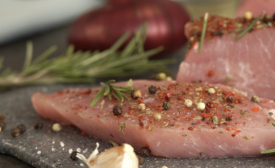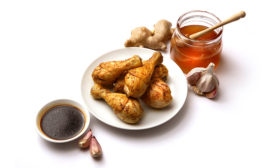Home » Keywords: » marinades
Items Tagged with 'marinades'
ARTICLES
Marinades balance flavor with convenience.
Read More
Marinades add life, and challenges, to meat and poultry merchandising
More processors are injecting marinades into meat and poultry to create higher-margin items with added flavor, but operators must adhere to strict guidelines if they are to sustain quality and shopper interest.
Read More
Tech | Ingredients
Infused flavor
Strong flavor, clean labels and improved nutritional components are key to marinades.
Read More
Tech | Processing
Adding clean, even flavor
New technologies are improving marinades and injections.
Read More
Ingredients
Not just spicy
Dry marinades are anything but boring as they offer nuanced takes on exotic flavors, heat levels and sweet and spicy combinations.
Read More
Cleaning up marinades
Natural labels are chemical-free but still require multifunctional ingredients.
Read More
Ingredients
Marinades, brines and seasonings: More than a flavor
Marinades, brines and seasonings continue to launch innovative flavors while sticking to the basics for clean labels.
Read More
Ingredients
Trends in marinades, spices and brines
Fusing the past with the future: Marinades, spices and brines use old-school prep methods to create authentic global flavors.
Read More
Marinades, brines, spices get a Far Eastern influence
Exotic, spicy cuisines are directly influencing new marinades, brines and spices.
Read More
Stay ahead of the curve. Unlock a dose of cutting-edge insights.
Receive our premium content directly to your inbox.
SIGN-UP TODAYCopyright ©2025. All Rights Reserved BNP Media.
Design, CMS, Hosting & Web Development :: ePublishing












